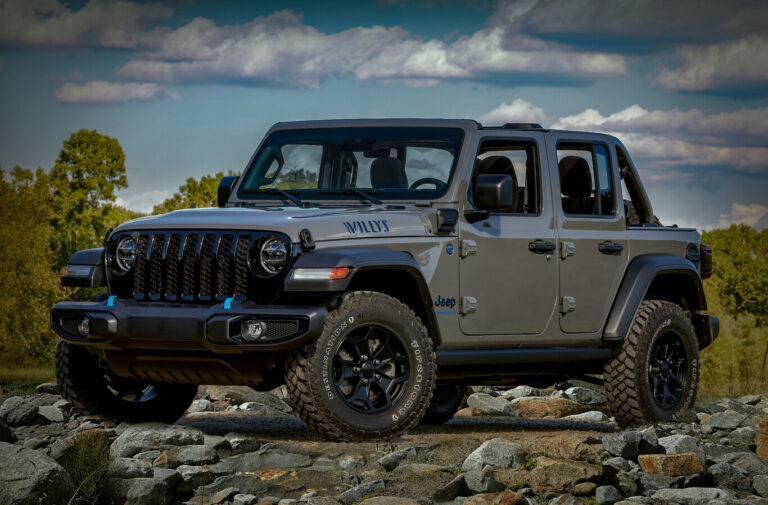Jeep Beadlocks For Sale: Your Ultimate Guide to Unlocking Off-Road Potential
Jeep Beadlocks For Sale: Your Ultimate Guide to Unlocking Off-Road Potential /jeeps.truckstrend.com
For the dedicated Jeep enthusiast, the quest for ultimate off-road performance is a never-ending journey. From lift kits and winches to heavy-duty axles, every component plays a crucial role in conquering challenging terrains. Among the most vital, yet often misunderstood, upgrades are Jeep Beadlocks. If you’ve ever found yourself airing down your tires to single-digit pressures, only to worry about unseating a bead, then beadlock wheels are the game-changer you’ve been searching for. This comprehensive guide will delve into everything you need to know about Jeep beadlocks for sale, exploring their function, benefits, types, considerations, and how to make the best purchase for your off-road adventures.
What Exactly Are Jeep Beadlocks?
Jeep Beadlocks For Sale: Your Ultimate Guide to Unlocking Off-Road Potential
At its core, a beadlock wheel is designed to securely clamp the tire bead to the wheel rim, preventing the tire from detaching (or "unseating") when running extremely low tire pressures. Unlike conventional wheels where the tire bead relies solely on air pressure to hold it against the rim’s inner lip, a true beadlock wheel employs a mechanical clamping system.
Typically, a beadlock wheel consists of two main parts: the wheel itself and an outer ring (often called a "beadlock ring" or "clamp ring"). The tire is mounted onto the wheel, and the outer bead of the tire is then positioned between the wheel’s outer lip and the beadlock ring. A series of bolts pass through the outer ring and thread into the wheel, effectively squeezing and clamping the tire bead in place. This secure, mechanical bond ensures that even at pressures as low as 0-5 PSI, the tire remains firmly seated on the rim, providing unparalleled traction and stability in challenging off-road conditions.
Why You Need Beadlocks for Your Jeep: Key Benefits
The primary reason Jeep owners invest in beadlocks is to significantly enhance their vehicle’s off-road capability. Here’s a breakdown of the key benefits:
- Unparalleled Traction at Low PSI: This is the flagship advantage. By allowing you to safely air down to extremely low pressures (e.g., 5-8 PSI, or even lower for competition), beadlocks dramatically increase your tire’s contact patch with the ground. A larger contact patch means more grip on rocks, sand, mud, and uneven terrain, significantly improving traction and climbing ability.
- Prevents Bead Unseating: The most common fear when airing down is "popping a bead." This occurs when the tire bead separates from the wheel rim, leading to a rapid loss of air and a flat tire, often in an inconvenient or dangerous spot. Beadlocks eliminate this risk, providing peace of mind and allowing you to push your vehicle harder.
- Enhanced Control and Stability: With a more consistent and predictable tire shape at low pressures, your Jeep gains better control over obstacles. The tire can conform more effectively to the terrain, reducing bouncing and improving overall stability.
- Reduced Tire Damage (Sidewall Punctures): While not foolproof, the ability to air down allows the tire’s sidewall to flex and absorb impacts more effectively, potentially reducing the likelihood of punctures or cuts from sharp rocks or debris.
- Optimized Performance for Specific Terrains: For rock crawling, the increased contact patch and conformity are invaluable. In sand, the wider footprint allows the Jeep to "float" more effectively, preventing it from digging in. In mud, the aggressive lugs can clean out better at lower pressures.
- Safety in Extreme Conditions: Preventing a sudden bead unseat when traversing a steep side-hill or navigating a tricky obstacle is a significant safety advantage, maintaining vehicle control when it matters most.

Types of Jeep Beadlocks For Sale
When searching for "Jeep Beadlocks For Sale," you’ll encounter a few different categories:
- True External Beadlocks: These are the most common type and feature the visible outer ring and bolts. They are designed for extreme off-road use and offer the most secure tire retention.
- DOT Compliance: A critical distinction within true beadlocks is DOT (Department of Transportation) compliance. The vast majority of true beadlock wheels are not DOT approved for street use. This is primarily due to increased maintenance requirements (regular bolt re-torquing), potential for bolts to loosen, and the added weight. Some manufacturers, like Hutchinson, offer internal beadlock systems that are DOT compliant. If a beadlock wheel claims to be DOT approved, verify this claim thoroughly, as it’s rare for external beadlocks. For most, beadlocks are considered "off-road only" equipment.
- Simulated/Cosmetic Beadlocks: These wheels look like beadlocks, featuring a decorative outer ring and bolts, but they do not actually clamp the tire bead. They are standard wheels with an aesthetic enhancement. They offer no functional benefit in terms of bead retention and are purely for looks. While much cheaper, they won’t help you air down safely.
- Internal Beadlocks: Less common in the aftermarket, internal beadlocks like those from Staun or Hutchinson utilize an internal bladder or second beadlock system inside the tire. This effectively creates two air chambers within the tire, allowing the outer chamber to be aired down to very low pressures while the internal chamber maintains pressure to hold the tire bead. Some of these systems are DOT compliant, making them a viable option for those who want street legality with off-road capability.
Materials: Beadlocks are typically made from:
- Aluminum: Lighter weight, excellent strength-to-weight ratio, popular for performance.
- Steel: Heavier, often more affordable, extremely durable and resistant to impact, favored by some for hardcore rock crawling where weight isn’t as critical as brute strength.
Important Considerations When Buying Jeep Beadlocks For Sale
Purchasing beadlocks is a significant investment, and several factors should influence your decision:
- Legality (DOT Compliance): As mentioned, most true external beadlocks are not street legal. Understand your local laws and regulations. If you drive your Jeep on public roads, you might need a second set of wheels or consider internal beadlock systems.
- Maintenance Requirements: Beadlocks require diligent maintenance. The beadlock ring bolts need to be regularly checked and re-torqued (before every major off-road trip and sometimes after). Failure to do so can lead to loose bolts, ring damage, or even bead separation.
- Cost: Beadlocks are significantly more expensive than standard wheels. Factor in the cost per wheel, plus potentially more specialized tires, installation, and ongoing maintenance.
- Weight: Beadlocks are heavier than standard wheels, especially steel ones. This added unsprung weight can impact fuel economy, acceleration, braking, and put additional stress on suspension components, axles, and the drivetrain. You may need to upgrade other components to compensate.
- Tire Compatibility: While most off-road tires can be mounted on beadlocks, some tire designs have beads that seat better than others. Consult with your wheel manufacturer or a reputable off-road shop.
- Installation Complexity: Mounting tires on beadlocks is more involved than traditional wheels. It requires careful attention to bolt torque sequence, cleanliness, and often specialized tools. Many opt for professional installation.
- Bolt Pattern and Backspacing: Crucial for proper fitment on your specific Jeep model (e.g., JK, JL, TJ, YJ). Ensure the wheel’s bolt pattern (e.g., 5×5, 5×4.5) and backspacing are correct for your vehicle to prevent rubbing or clearance issues.
- Brand Reputation: Stick with reputable manufacturers known for quality and durability in the off-road community. Brands like Method Race Wheels, KMC, Raceline, Dirty Life, Trail-Gear, and Black Rock are popular choices.
Finding Jeep Beadlocks For Sale: Where to Look
When you’re ready to buy, here are the best places to look for Jeep beadlocks:
- Specialized Off-Road Retailers (Online & Brick-and-Mortar): Websites like Quadratec, ExtremeTerrain, 4 Wheel Parts, Northridge4x4, and numerous smaller specialized shops offer a wide selection, competitive pricing, and often knowledgeable staff.
- Manufacturer Websites: Many top brands sell directly from their websites. This can be a good way to ensure authenticity and get direct support.
- Used Marketplaces: Websites like Craigslist, eBay, dedicated Jeep forums (e.g., JK-Forum, JL Wrangler Forums), and Facebook Marketplace groups often have used beadlocks for sale. While you can find deals, exercise caution: inspect them thoroughly for damage, cracks, or stripped bolt holes. Ask for detailed photos and purchase from reputable sellers.
- Off-Road Trade Shows and Expos: Events like Easter Jeep Safari, King of the Hammers, or local off-road expos are great places to see new products, talk to manufacturers, and sometimes snag show discounts.
- Package Deals: Many retailers offer wheel and tire packages, which can sometimes provide a discount on the combined purchase.
Installation and Maintenance Tips
- Installation:
- Cleanliness is Key: Ensure the tire bead and wheel mating surfaces are spotless. Any dirt or debris can compromise the seal.
- Proper Torque Sequence: Always follow the manufacturer’s recommended torque sequence (usually a star pattern) and torque values. Use a quality torque wrench.
- Anti-Seize: Apply a thin layer of anti-seize compound to the bolt threads to prevent galling and make future removal easier.
- Patience: Take your time. Installing beadlocks correctly is critical for safety and performance. If unsure, seek professional installation.
- Maintenance:
- Regular Bolt Checks: This is paramount. Before and after every significant off-road trip, check the torque on all beadlock ring bolts. Vibration and flexing can cause them to loosen.
- Cleaning: After muddy or dusty trips, clean the beadlock rings and bolts to prevent corrosion and ensure proper seating.
- Street Pressure: When driving on the street, inflate your tires to the manufacturer’s recommended PSI (typically 28-35 PSI) to reduce wear and improve handling. Only air down for off-road use.
Jeep Beadlocks For Sale: Estimated Price Table
Prices can vary significantly based on brand, material, size, and whether they are new or used. This table provides a general estimate for new, individual wheels.
| Brand/Type | Material | Size (Diameter x Width) | Estimated Price Per Wheel (New) | Notes |
|---|---|---|---|---|
| Method Race Wheels | Aluminum | 17×9, 17×9.5 | $350 – $600 | Popular, high-quality, wide range of designs |
| KMC Wheels (XD Series) | Aluminum | 17×9, 18×9 | $300 – $550 | Strong designs, performance-oriented |
| Raceline Wheels | Aluminum | 17×9, 17×9.5 | $320 – $580 | Renowned in racing, durable, various finishes |
| Dirty Life Wheels | Aluminum | 17×9, 20×9 | $280 – $500 | Aggressive styling, good value |
| Trail-Gear | Steel | 15×8, 17×9 | $200 – $350 | Heavy-duty, budget-friendly steel options |
| Black Rock Wheels | Steel | 15×8, 17×9 | $180 – $300 | Affordable steel beadlocks |
| Hutchinson (Internal) | Aluminum | 17×8.5, 17×9 | $800 – $1200+ | DOT compliant, internal beadlock system (pricier) |
| Used Beadlocks | Varies | Varies | $150 – $400 | Requires careful inspection, "as-is" |
Note: Prices are estimates and can fluctuate based on specific model, retailer, promotions, and market conditions. This table does not include the cost of tires, mounting, or balancing.
Frequently Asked Questions (FAQ)
Q1: Are Jeep beadlocks street legal?
A1: Most true external beadlock wheels are NOT DOT (Department of Transportation) approved for street use. This is due to safety concerns like maintenance requirements and the potential for bolts to loosen. Some internal beadlock systems (like Hutchinson) are DOT compliant. Always check your local laws and regulations.
Q2: Do I really need beadlocks for my Jeep?
A2: You need beadlocks if you regularly air down your tires to single-digit PSI (e.g., 8 PSI or lower) for extreme off-roading, rock crawling, or deep sand/mud. For casual trail riding where you only air down to 15-20 PSI, traditional wheels are usually sufficient.
Q3: What’s the difference between true and simulated beadlocks?
A3: True beadlocks mechanically clamp the tire bead to the wheel, preventing unseating at low pressures. Simulated (or cosmetic) beadlocks only look like beadlocks but offer no functional bead retention; they are standard wheels with decorative rings.
Q4: How often do I need to re-torque the beadlock bolts?
A4: Manufacturers recommend checking and re-torquing the bolts before and after every major off-road trip. Some even suggest checking after the first 50-100 miles of street driving after installation. Consistency is key.
Q5: Can beadlock wheels be balanced?
A5: Yes, beadlock wheels can be balanced, but it can be more challenging than with standard wheels due to the inherent weight of the ring and bolts. Most tire shops use stick-on weights on the inside of the rim. Dynamic balancing is often recommended.
Q6: What PSI can I run with beadlocks?
A6: With true beadlocks, you can safely run extremely low pressures, often down to 5 PSI or even 0-3 PSI for very specific situations like rock crawling. Always exercise caution and understand the limits of your tires and terrain.
Q7: Do beadlocks make my tires wear faster?
A7: Running tires at extremely low pressures for extended periods, even with beadlocks, can increase sidewall flex and heat, potentially leading to faster wear. It’s crucial to air up to street pressures when not off-roading.
Conclusion
Jeep beadlocks are more than just an aesthetic upgrade; they are a fundamental performance enhancement for serious off-road enthusiasts. While they represent a significant investment in terms of cost, weight, and maintenance, the unparalleled ability to air down and maintain tire integrity in the most demanding conditions is invaluable. By understanding the different types, key benefits, important considerations, and where to find quality Jeep Beadlocks For Sale, you can make an informed decision that will undoubtedly elevate your Jeep’s off-road capabilities and unlock new levels of adventure and confidence on the trail. Choose wisely, maintain diligently, and prepare to conquer terrains you once thought impossible.





